ORIF - Dorsal double plate
1. Preliminary remarks
These are radiocarpal dorsal fracture dislocations. They are the result of higher energy trauma, can have associated soft-tissue injuries, and are often found in polytrauma cases.
The injury is characterized by multifragmentary dorsal rim fractures and dorsal dislocation of the carpus.
If the distal radial fragments are predominantly dorsal, they may be held with dorsally applied plates, but if there is a significant radial styloid fragment, this is help more effectively with a radial plate (see Dorsoradial double plating).
Reduction and fixation can be performed using dorsally applied plates, although reduction and stabilization by external fixation may be chosen (at least initially) because of marked swelling.
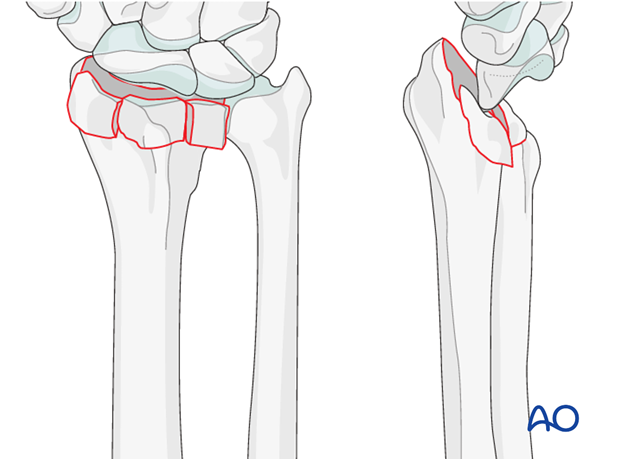
Provisional reduction in displaced fractures
Reduction is achieved by applying longitudinal traction either manually or using Chinese finger traps.
The reduction is maintained by a temporary splint.
If definitive surgery is planned, but cannot be performed within a reasonable time scale, a temporary external fixator may be helpful.
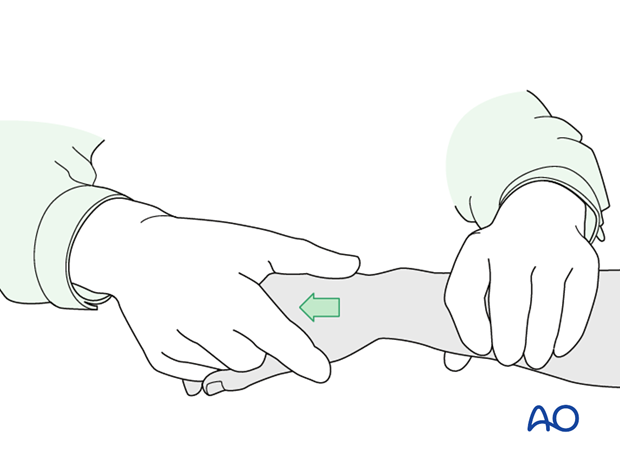
2. Associated injuries
Median nerve compression
If there is dense sensory loss, or other signs of median nerve compression, the median nerve should be decompressed.
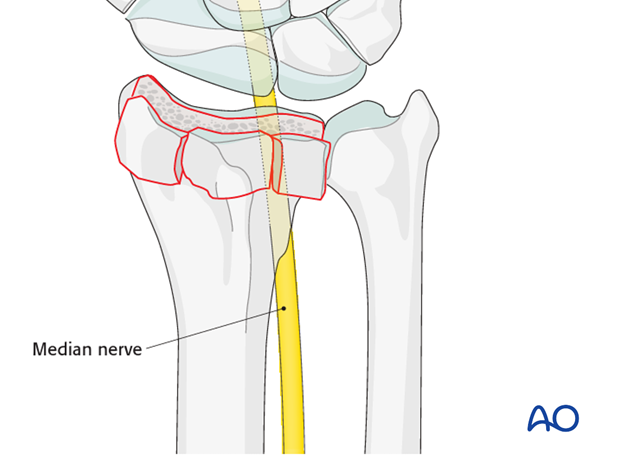
Associated carpal injuries
These injuries may be associated with shearing injuries of the articular cartilage, scaphoid fracture and rupture of the scapholunate ligament (SL). Every patient should be assessed for this injury. If present, see carpal bones of the Hand module.
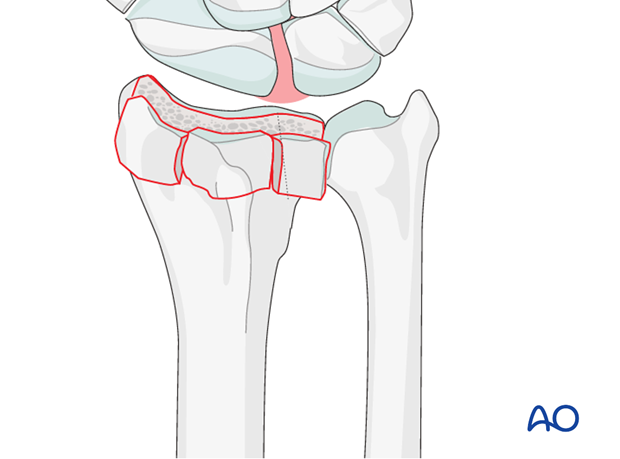
DRUJ/ulnar injuries
These injuries may be accompanied by avulsion of the ulnar styloid and/or disruption of the DRUJ. If there is gross instability after the fixation of the radial fracture, it is recommended that the styloid and/or the triangular fibrocartilaginous disc (TFC) is reattached. This is not common in simple fractures, but may occur with some high energy injuries.
The uninjured side should be tested as a reference for the injured side.
It may not be possible to assess DRUJ stability until the fracture has been stabilized (as described below).
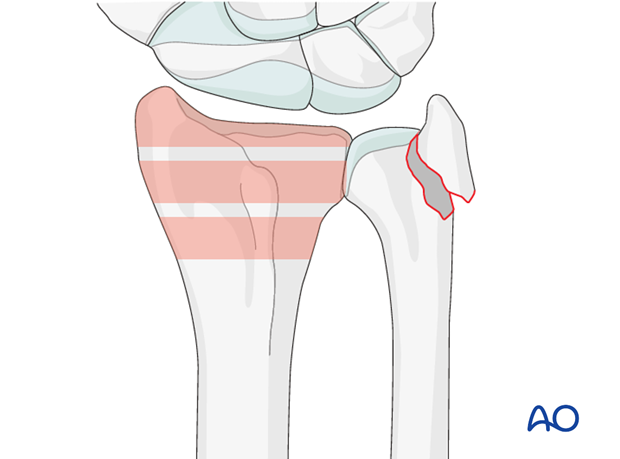
3. Patient preparation and approach
Patient preparation
The patient may be placed either in a supine position for distal unlar fractures or supine position for dorsal approaches.
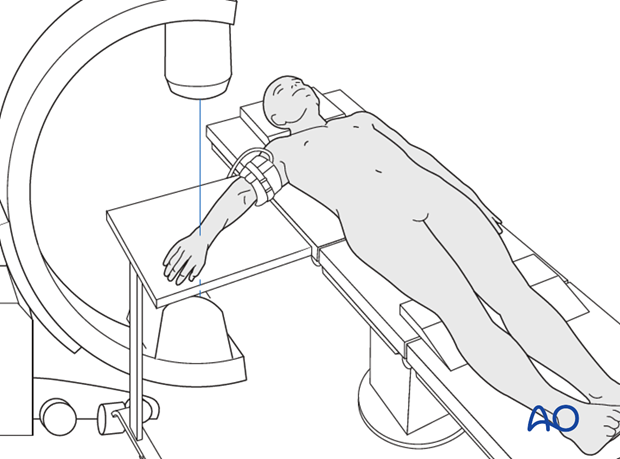
Approach
Open reduction is achieved via a dorsal approach.
A thorough knowledge of the anatomy around the wrist is essential. Read more about the anatomy of the distal forearm.
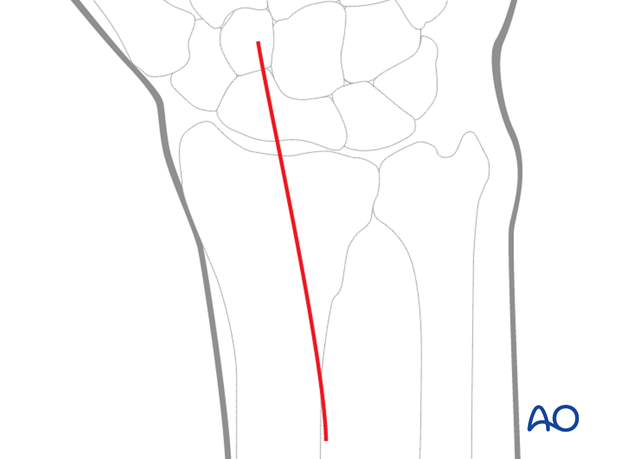
4. Open reduction
The articular fragments are reduced under direct vision, using a periosteal elevator and dental pick.
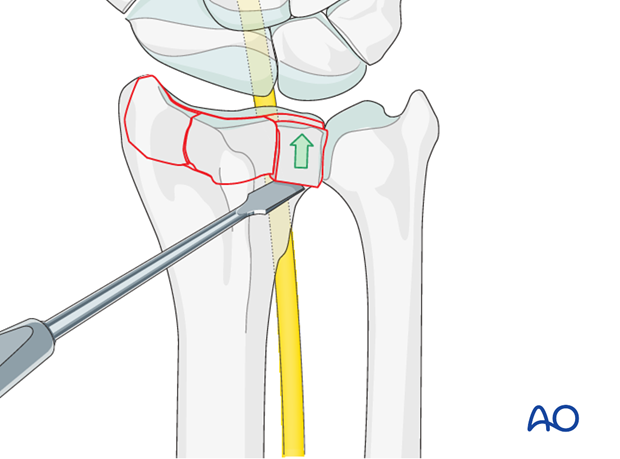
Preliminary Fixation
Insert one or more additional K-wires to hold the reduction of the articular fragments.
Confirm anatomical reduction using image intensification.
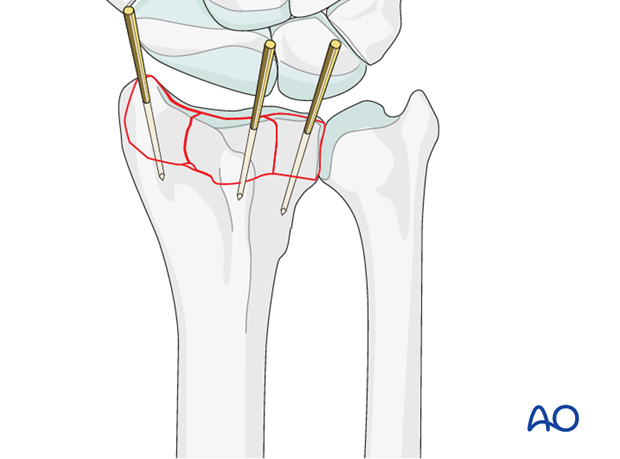
5. Plate fixation
Many plates are available for this application, some with locking screws. The most recently designed plates have variable angle locking screws.
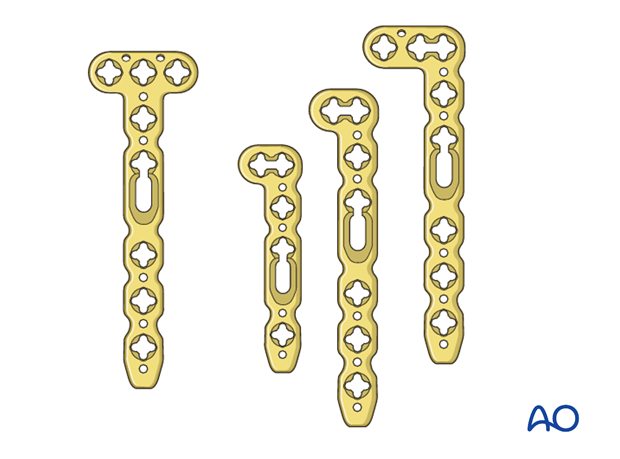
Contouring
Because of the shape of the dorsal distal metaphysis, the plates may need to be contoured to fit the bone surface and the proximal limbs may require some torsional adaptation.
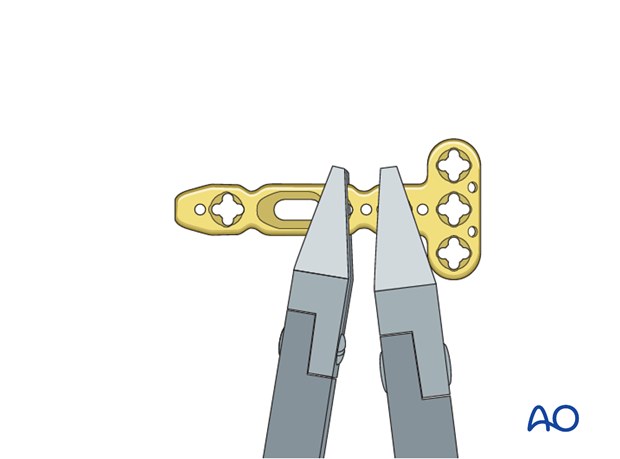
Pitfall: Screw hole distortion
Avoid bending or torsional adaptation at the locking holes of the plate, otherwise the locking head screw might not fit anymore.

Plate position to fix dorsoulnar fragments
The T-plate should be applied as distal as possible over the dorsal lunate facet fragments.
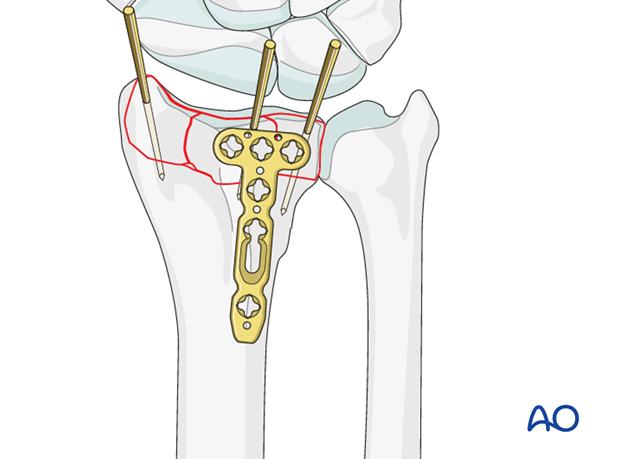
Application of the plate
Insert a nonlocking, standard screw through the oblong plate hole, but do not fully tighten it yet.
Confirm the reduction and plate position using image intensification. If necessary, adjust the plate position until it is as distal as possible, and then tighten the screw.
If the provisional K-wire conflicts with the optimal plate position, the plate can be slipped over the wire.
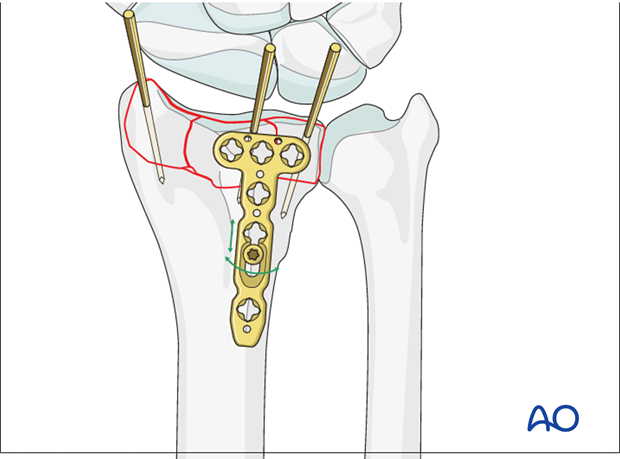
Insert distal screws
Locking head screws are inserted through the distal plate holes.
The K-wires are then removed.
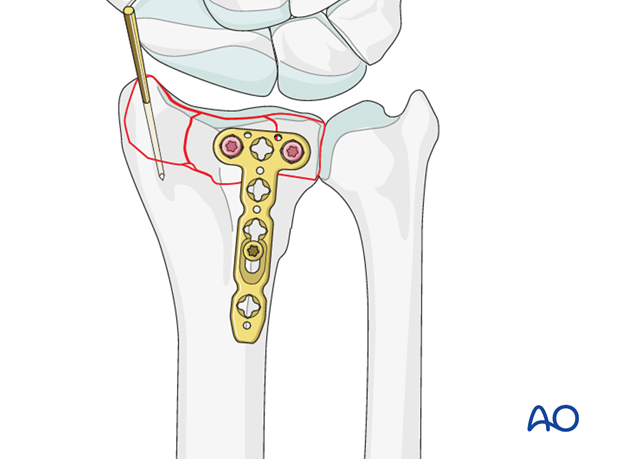
Confirm screw position
With image intensification, confirm that the distal screws have not penetrated the articular surface. To have a view in line with the articular surface, the beam should be angled 20º from the true lateral.
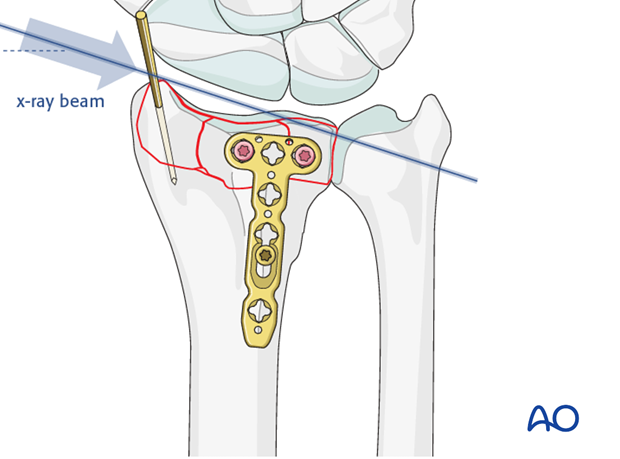
Insert proximal screw
Insert the proximal screws, which should penetrate the palmar cortex.
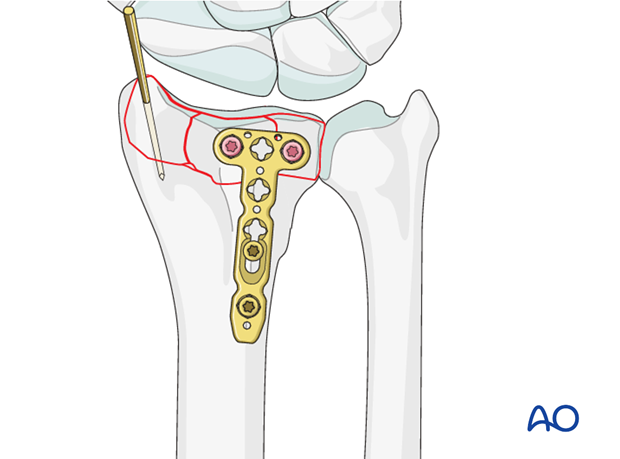
Plate position to fix dorsoradial fragment
The small L-plate should be applied over the dorsoradial fragment.
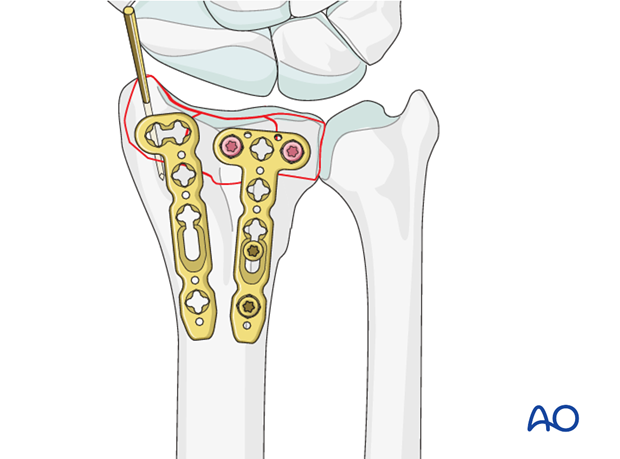
Application of the plate
Insert a nonlocking, standard screw through the oblong plate hole, but do not fully tighten it yet.
Confirm the reduction and correct plate position using image intensification, then tighten the screw.
If the provisional K-wire conflicts with the optimal plate position, the plate can be slipped over the wire.
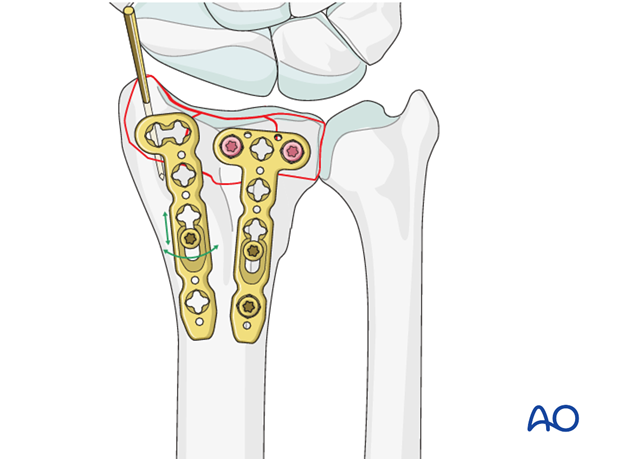
Insert distal screws
Locking head screws are inserted through the distal plate holes.
The K-wire is then removed.
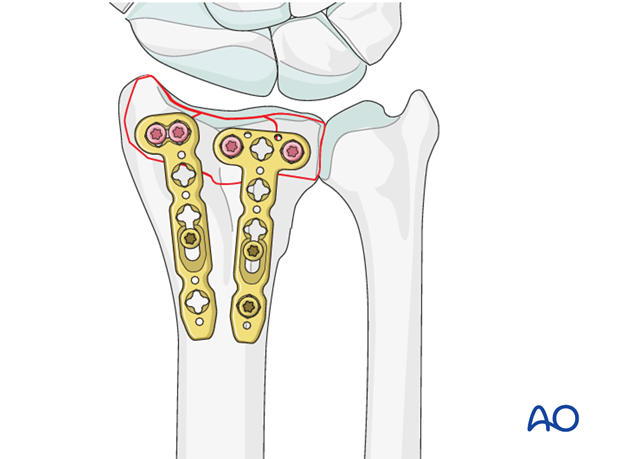
Confirm screw position
With image intensification, confirm that the distal screws have not penetrated the articular surface. In order to have a view in line with the articular surface, the beam should be angled 20º from the true lateral.
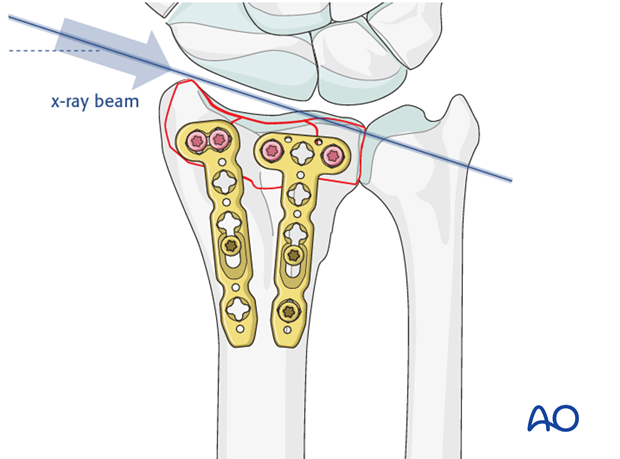
Insert proximal screws
Insert the proximal screws, which should penetrate the palmar cortex.
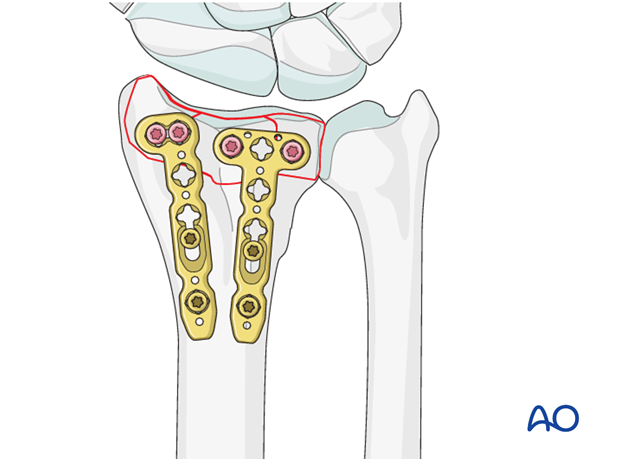
6. Additional fixation
Additional palmar ligamentous avulsion reattachment
Dorsal carpal subluxation may be associated with avulsion of the palmar wrist capsule from the distal radius.
After dorsal fixation, check the carpal position and stability under image intensification. If there is carpal ulnar and/or palmar translation, consider an additional palmar approach to repair soft tissues. The capsule can be reattached using multiple suture anchors or transosseous sutures.
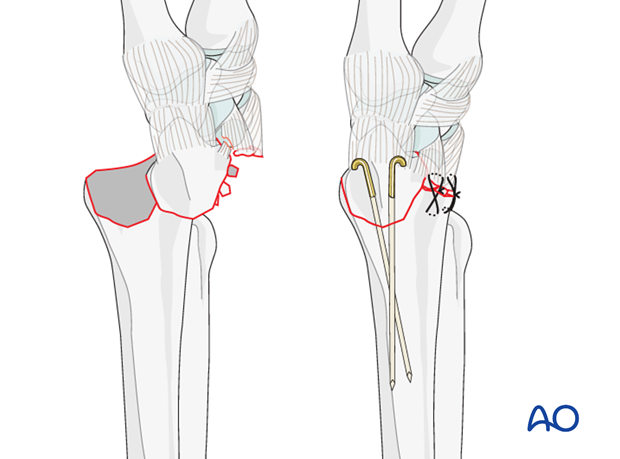
Additional external fixation
If the dorsal rim fragments are large enough, they may be held in place with a buttress plate.
If they are too small, K-wires may be the definitive fixation. In this case, a neutralization external fixation should be applied.
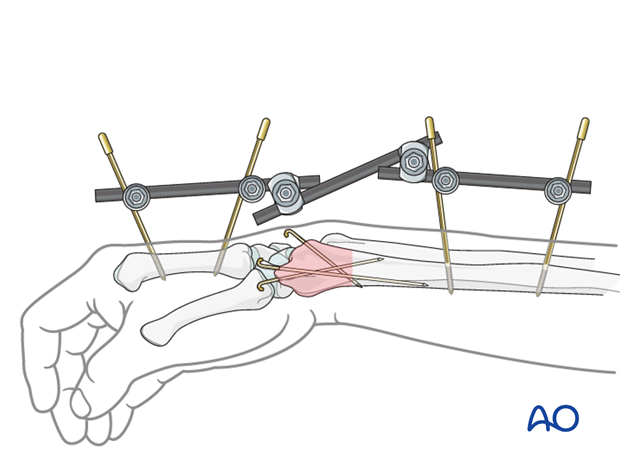
7. Assessment of Distal Radioulnar Joint (DRUJ)
Before starting the operation, the uninjured side should be tested as a reference for the injured side.
After fixation, the distal radioulnar joint should be assessed for forearm rotation, as well as for stability. The forearm should be rotated completely to make certain there is no anatomical block.
Method 1
The elbow is flexed 90° on the arm table and displacement in dorsal palmar direction is tested in a neutral rotation of the forearm with the wrist in neutral position.
This is repeated with the wrist in radial deviation, which stabilizes the DRUJ, if the ulnar collateral complex (TFCC) is not disrupted.
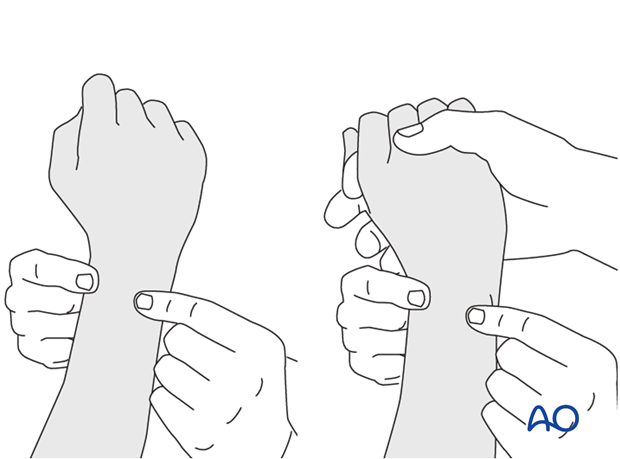
This is repeated with the wrist in full supination and full pronation.
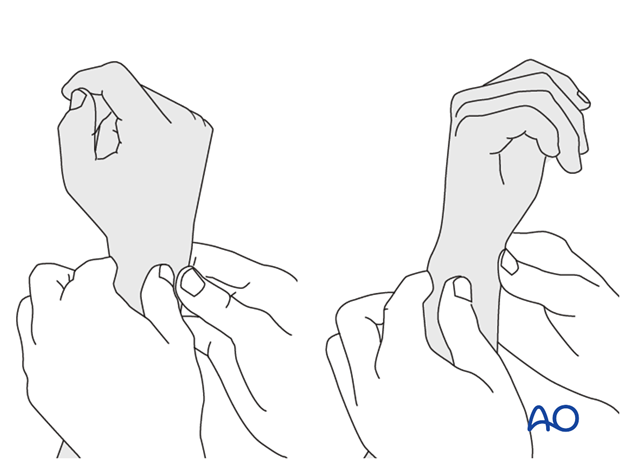
Method 2
To test the stability of the distal radioulnar joint, the ulna is compressed against the radius...
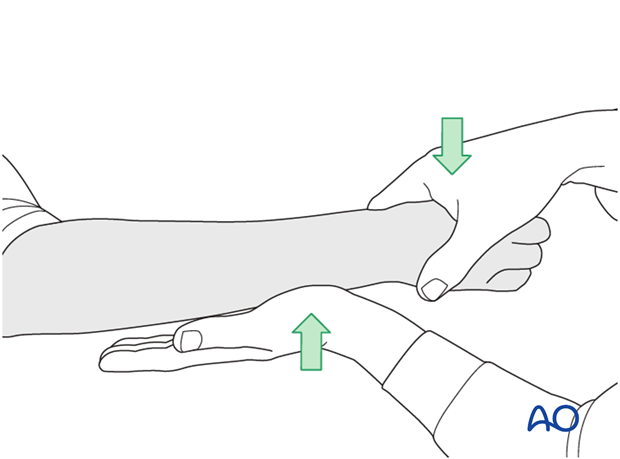
...while the forearm is passively put through full supination...
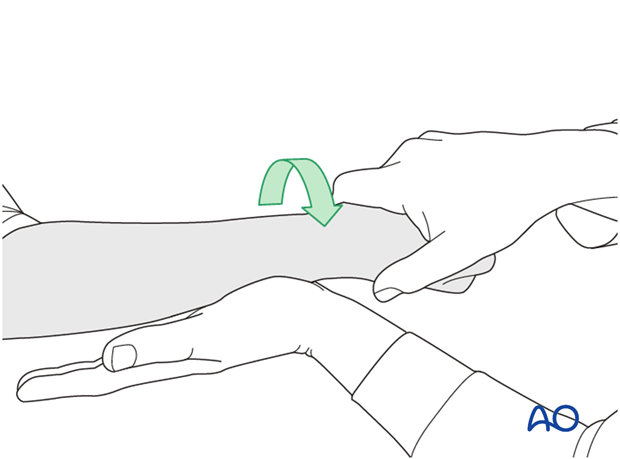
...and pronation.
If there is a palpable “clunk”, then instability of the distal radioulnar joint should be considered. This would be an indication for internal fixation of an ulnar styloid fracture at its base. If the fracture is at the tip of the ulnar styloid consider TFCC stabilization.
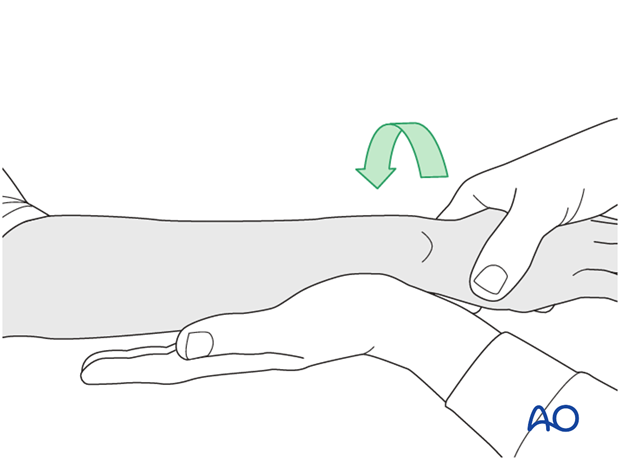
8. Aftercare
Functional exercises
Immediately postoperatively, the patient should be encouraged to elevate the limb and mobilize the digits, elbow and shoulder.
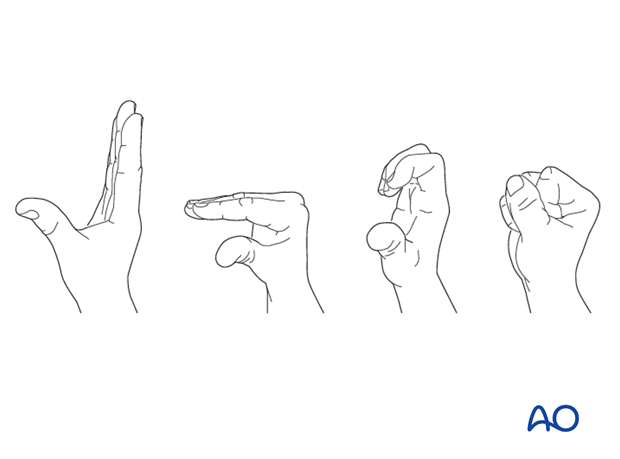
Some surgeons may prefer to immobilize the wrist for 7-10 days before starting active wrist and forearm motion. In those patients, the wrist will remain in the dressing applied at the time of surgery.

Wrist and forearm motion can be initiated when the patient is comfortable and there is no need for immobilization of the wrist after suture removal.
Resisted exercises can be started about 6 weeks after surgery depending on the radiographic appearance.
If necessary, functional exercises can be under the supervision of a hand therapist.

Follow up
See patient 7-10 days after surgery for a wound check and suture removal. X-rays are taken to check the reduction.
Implant removal
Implant removal is purely elective but may be needed in cases of soft-tissue irritation, especially tendon irritation to prevent late rupture. This is particularly a problem with dorsal or radial plates. These plates should be removed between nine and twelve months.













